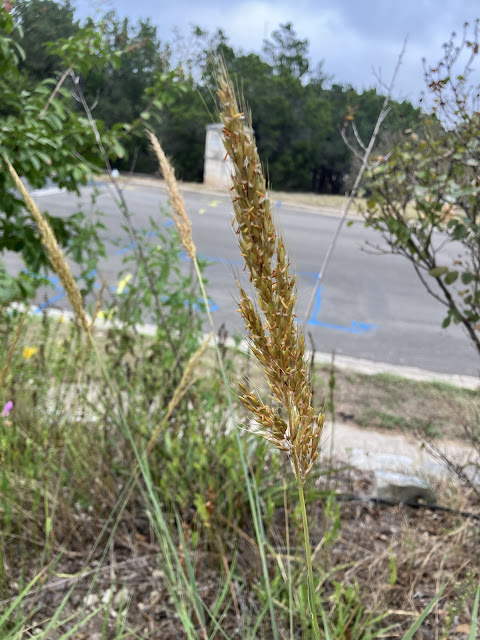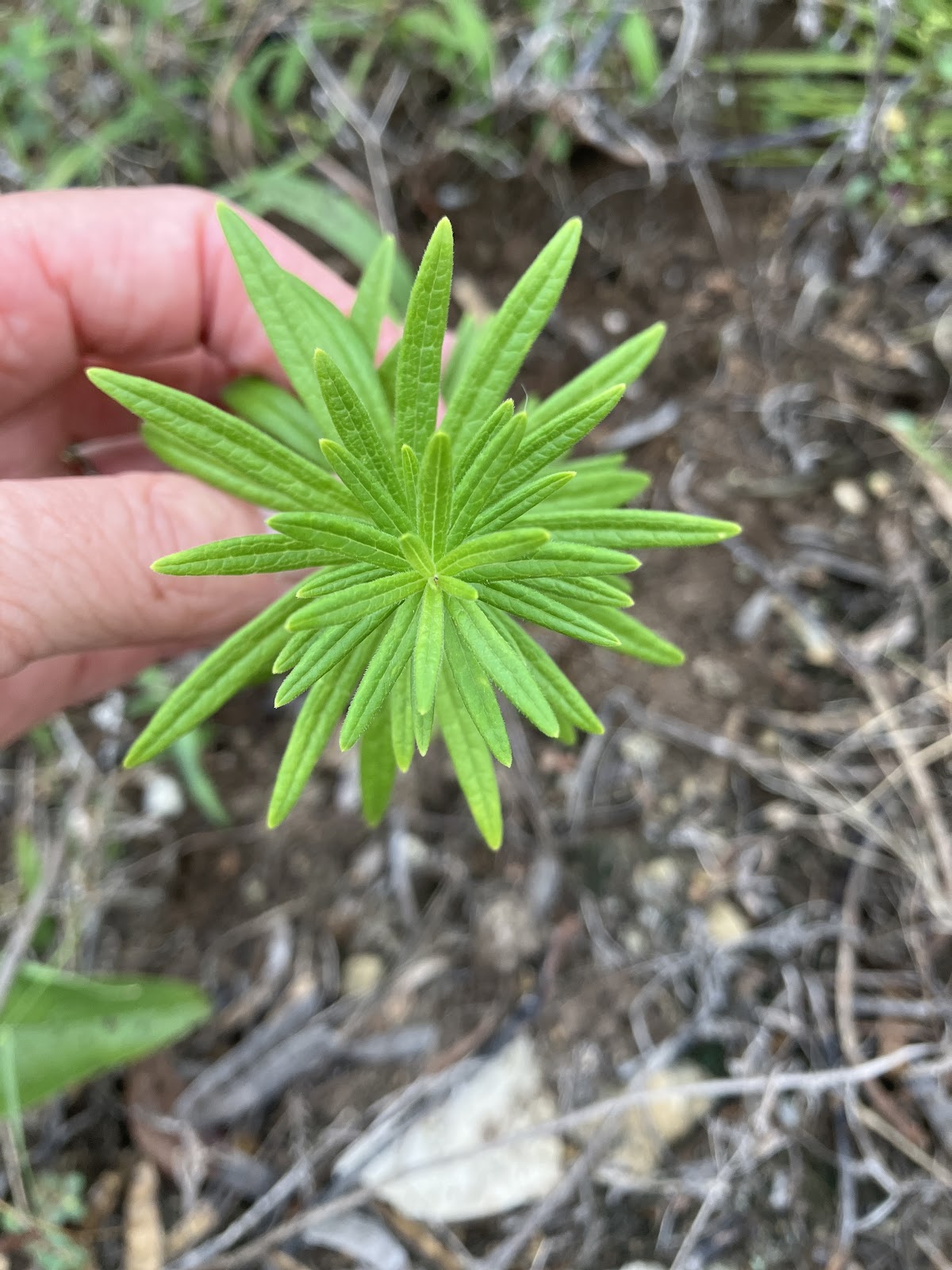Texas Frog Fruit
Phyla Nodiflora
Update Nov 2025: Still alive!!
I planted three of these in the fence garden near the pond. Two of them were near the Mock Orange, and the other between the Beautyberry and Oakleaf Hydrangea. Of all the plants I put in the ground today, these are the ones most likely to live. Frog fruit is a very common plant, but not one I currently have in the garden. I am hoping it will fill in some of the mulchy areas, and bring small pollinators to the garden. It is a larval host for Phaon Crescentspot, Buckeye and White Peacock.
Texas Frogfruit can be used as an excellent ground cover and is evergreen in warm years. It is also evergreen in areas protected from frost. It spreads vigorously. Frogfruit generally is a good nectar plant for butterflies. It is an attractive plant rambling over boulders or the edges of hanging baskets. It also can tolerate drought and flooding.
This species is a member of the verbena family (family Verbenaceae), which includes about 75 genera and 3,000 species of herbs, shrubs, and trees, mostly of tropical and warm temperate regions. Among them, teak is a highly prized furniture wood, and Vervain, Lantana, Lippia or Frog Fruit, and Chase Tree or Vitex are grown as ornamentals.
Water Use: Low , Medium
Light Requirement: Sun , Part Shade
Soil Moisture: Dry , Moist
CaCO3 Tolerance: Medium
Heat Tolerant: yes
Soil Description: Sand, loam, clay, caliche, limestone. Poor drainage and saline soils okay.
Conditions Comments: Tolerates drought and flooding. Will go dormant during hard winters.
Senna lindheimer
Update Nov 2025: Still alive!!
I planted this in the solar garden, in a spot that does not get any extra water and is in full sun, because NG told me that it can get unhappy if it gets too much water. I have killed this plant once before, so we will see how this one does.
This is a larval host for sleepy orange and sulphur butterflies
Velvet-leaf wild sensitive-plant or Lindheimer's senna is a bushy perennial, 3-6 ft. high. Its yellow, 1 1/2 in. flowers are borne in terminal or upper axillary, spike-like racemes. The 5 oval petals are crimped at the edges. The compound leaves have 4-8 pairs of leaflets that are oval, sometimes pointed, and covered with soft hairs and are arranged spirally around the stems.
This plant is effective in a wildflower garden as either a specimen or background plant. The seeds provide an important source of food for birds.
Growing Conditions
Water Use: Low
Light Requirement: Sun , Part Shade
Soil Moisture: Dry
Soil Description: Dry, rocky soils. Limestone-based, Sandy, Sandy Loam
White sagebrush
Artemisia ludoviciana
Update Nov 2025: Still alive!! (Thought mine looks way leggier than this photos. Not very pretty)
I was warned that this can spread very quickly. Even the wildflower center says this can be considered an invasive weed. I can't find much on it, but did find one site that said, " It is a host plant for both the American lady butterfly (Vanessa virginiensis, photos) and the painted lady butterfly (Vanessa cardui, photos). " If it proves to be too much, I can move it to be with the golden rod, which also spreads rapidly. The two plants can fight it out.
This is a stiff, aromatic, silvery-white perennial, 1 1/2-3 ft. tall, which can spread quickly to form large colonies. Shrub-like, white, densely matted with hairs, from rhizome. Small, yellowish flowers are secondary to the silver color of the erect stems and narrow leaves, created by a dense coat of hairs.
This is a common artemisia, with attractive, fragrant, whitish green foliage. Its adaptability and tendency to colonize makes it a good choice for a low-maintenance, knee- to waist-high groundcover. It can even take mowing.
Water Use: Low
Light Requirement: Sun
Soil Moisture: Dry
CaCO3 Tolerance: High
Drought Tolerance: High
Heat Tolerant: yes
Velvet-leaf mallow
Allowissadula holosericea
Update Nov 2025: Still alive!! But these haven't grown at all, they are still only a few inches tall.
Another new-to-me native. It was compared to Turk's cap, which is an awesome plant. I put three of them in the pond fence garden. It says they need moist soil, but then it says they are good in a xeric garden bed and they do well in dry rocky soil. Kind of confusing. It says it need Part Shade, so we will see how it does in that part-shade bed.
An attractive and eye-catching, but coarse-textured, shrub that reaches about 6 feet in height. Its large, chartreuse, heart-shaped leaves are velvety to the touch. Velvet-leaf Mallow has a long flowering season which lasts as long as the weather is warm. Its orange-yellow five-petaled flowers are lovely and attractive to pollinators. The native habitat of this species is on dry, rocky soil in open woodlands on the Edwards Plateau and the Trans-Pecos in Texas and in southern New Mexico and northern Mexico.
Velvet-leaf Mallow is a good choice for a background plant in a xeric garden bed.
Light Requirement: Part Shade
Soil Moisture: Moist (?? Feel like this is wrong)
Conditions Comments: Velvet-leaf mallow is striking for its large, heart-shaped leaves and their luxurious texture and for delicate orange flowers. Over the course of the growing season, the plant may become bare underneath. The plant looks attractive with white mistflower, lantana, or big muhly planted in front of it.
Green Milkweed
Asclepia viridis
None of the ones I purchased made it. One died almost immediately, the second didn't make it through the winter. Not sure why I even try, lol.
I can never seem to pass up Milkweed, even though I almost always kill it. I have one milkweed growing n the garden (Zizote) after having planted probably a dozen different plants through the years. And the staff of NG tell me this one is just as hard to keep alive. The one staff member bought four of them, and only one lived through the first summer. Gotta try though. For what it is worth, (so I can recognize the corpses?), I planted two in the front sidewalk garden bed and one in the solar garden near the new senna plant.
Green Milkweed is a native, perennial forb or herb with alternate, entire leaves. The leaf margins are often wavy. Flowers are white and in an umbel, mostly one per plant. Upon close inspection, some rose or purple color is evident in the center of each individual flower (gynostegium). The milky substance that is exuded when a plant part is broken is very sticky, much resembling “Elmer’s glue.” These milkweeds bloom from late spring to middle summer.
This milkweed is common in pastures from Kansas to Texas. Generally avoided by cattle and horses. It can be found along roadsides, ditches, prairies, open areas, and other areas with little vegetative competition.
Water Use: Low
Light Requirement: Sun
Soil Moisture: Moist
Cold Tolerant: yes
Heat Tolerant: yes
Conditions Comments: This is another member of the milkweed family that certain butterflies love. It can be found growing in rich or poor soils and blooms off and on over ther growing season through the end of summer. Has a spreading, open growth form. Requires little water and full sun.
great info source: http://carolsworld.net/2020/04/19/green-milkweed-asclepias-viridis/
Swamp Milkweed
Asclepias incarnata
Yep - dead. Not even sure where it was.
Probably won't grow well, as it needs a lot of water. I put this in the pond fence garden. No need to say any more, because I know this guy wont make it. Hard to grow, and I put it in my death spot where I have been unable to get anything to grow for years.
It can go in sun or part-shade. Probably put it in part shade.
The large, bright, terminal blossoms of this tall, showy perennial are made up of small, rose-purple flowers. Deep pink flowers clustered at the top of a tall, branching stem, bearing numerous narrow, lanceolate leaves. Opposite, narrow, lance-shaped leaves line the erect, open-branched stem. Elongated, tan-brown seed pods persist into winter.
The juice of this wetland milkweed is less milky than that of other species. The genus was named in honor of Aesculapius, Greek god of medicine, undoubtedly because some species have long been used to treat a variety of ailments. The Latin species name means "flesh-colored."
Soil Description: Dry to mesic, rocky, shallow soils, well drained. Sand, loam, clay, caliche, limestone. Very adaptable.
Conditions Comments: Becomes leggy in fertile, moist soils.
Gregg's Dalea
No idea where I planted this. i am guessing it is dead. My Black Dalea that I bought at a later date is doing great.
I bought this thinking it was native to the Edward's Plateau, and then I got home and found it wasn't. So I just plopped this also in the pond fence garden.
Greggs prairie-clover or indigo bush is a 4-9 in., trailing sub-shrub, spreading 2-4 ft. Grown mostly for its silvery, blue-green, delicately compound leaves, the shrub is awash with clusters of tiny, pea-shaped purple flowers in spring and early summer.
This plant is a good ground cover for rocky slopes and exposed sites in the Southwest. Grown chiefly for its foliage, but also gets covered with purple blooms in summer. It will tolerate dry conditions well.
The species name “greggii” was named for Josiah Gregg, (1806-1850). He was born in Overton County, Tennessee. In the summer of 1841 and again in the winter of 1841-42 he traveled through Texas, up the Red River valley, and later from Galveston to Austin and by way of Nacogdoches to Arkansas. He took note of Texas geology, trees, prevalent attitudes, and politics. At the same time, Gregg began compiling his travel notes into a readable manuscript. His “Commerce of the Prairies”, which came out in two volumes in 1844, was an immediate success. In 1848 he joined a botanical expedition to western Mexico and California, during which he corresponded with and sent specimens to the eminent botanist George Engelman in St. Louis. Subsequently, the American Botanical Society added the Latin name “greggii” in his honor to twenty-three species of plants. Gregg died on February 25, 1850, as a result of a fall from his horse.
Water Use: Low
Light Requirement: Sun , Part Shade
Soil Moisture: Dry
Cold Tolerant: yes
Heat Tolerant: yes
Soil Description: Well-drained, dry granitic, sand, clay, loam, limestone, or gravelly soils with little organic content.
Conditions Comments: As a plant native to the Chihuahuan Desert region, where rains come in the summer, it will need some irrigation during dry summers, no more than twice a month. It must have good drainage in regions with wet winters, or else it will rot. Rainy autumns, too, may encourage new growth, which can then be damaged by winter freezes. May not survive temperatures below the teens and can take years to recover from such low temperatures.





